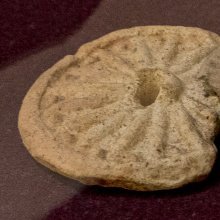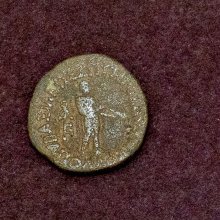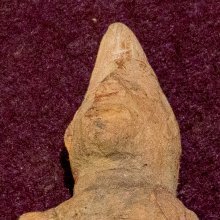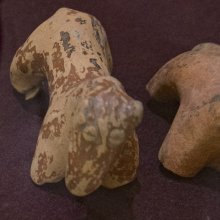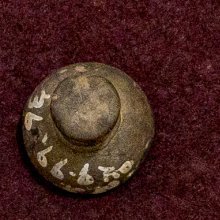Kushana, Kuṣāṇa: 5 definitions
Introduction:
Kushana means something in Buddhism, Pali, the history of ancient India. If you want to know the exact meaning, history, etymology or English translation of this term then check out the descriptions on this page. Add your comment or reference to a book if you want to contribute to this summary article.
Images (photo gallery)
(+3 more images available)
In Buddhism
General definition (in Buddhism)
Source: academia.edu: The Chronological History of BuddhismKushana kings dominated over North India from 1129 BCE to 1049 BCE. King Kanishka conquered up to Magadha and Orissa. King Kharavela of Kalinga invaded Magadha in 1049 BCE and drove the Khatrapas of Kushanas (Kharavela refers to them as Yavanas) to Mathura as recorded in Hathigumpha inscription. Thus, the kingdom of Kushanas reduced up to Matura only.
India history and geography
Source: Google Books: Manthanabhairavatantram (history)Kushana’s rule of Oḍḍiyāna.—The last great pre-Muslim empire to rule this region [i.e., Swat Valley] was that of the Kushanas up to the end of the 4th century CE. The following four centuries saw Sasanid rule, then that of the Hephtalites, and the Turkish Shahis. These were followed by the Hindu Shahis who ruled first from Kabul and then Hind on the Indus. By this time there had already been a few Arab incursions that further weakened this divided Afghan empire.
Source: academia.edu: The Chronology of Ancient Gandhara and BactriaThe Chronology of Early Kushanas (1250-950 BCE).—Kushanas were the successors of Indo-Greek or Yavana kings in the region of Gandhara and Bactria. Kujula Kadphises founded the rule of Kushanas in the second half of the 13th century BCE. Kushana Kings used old Bactrian script in their inscriptions and coins. Buddhist sources clearly indicate that King Kanishka reigned 700 years after Buddha nirvana (1865 BCE).
Most probably, Kushana royal families of Bactria and Gandhara had marriage relations with the Khurasani Persians since 900 BCE. When the Sasanians founded their empire in Persia after 550 BCE, the later Kushanas became their natural allies in Gandhara and Bactria. Thus, Kushano-Sasanian kings reigned in Bactria and Gandhara during the period 550-300 BCE.
Source: Shodhganga: Elements of Art and Architecture in the Trtiyakhanda of the Visnudharmottarapurana (history)Kushana refers to a certain period in the history of Indian Art.—The chronological order of the development of Indian Art as stated in The Heritage of Indian Art is as follows—[...] 8. Kuśāṇa period belongs to 1 A.D.-176 A.D. This period includes Mathura school of sculpture, in where the Buddha images has been originated. Gāndhāra school of sculpture in Northwestern India is also a remarkable contribution in the field of Art in the Kuśāṇa period.

The history of India traces the identification of countries, villages, towns and other regions of India, as well as mythology, zoology, royal dynasties, rulers, tribes, local festivities and traditions and regional languages. Ancient India enjoyed religious freedom and encourages the path of Dharma, a concept common to Buddhism, Hinduism, and Jainism.
Languages of India and abroad
Nepali dictionary
Source: unoes: Nepali-English DictionaryKusana (कुसन):—n. cushion;
Nepali is the primary language of the Nepalese people counting almost 20 million native speakers. The country of Nepal is situated in the Himalaya mountain range to the north of India.
See also (Relevant definitions)
Starts with: Kushanabha, Kushanagara, Kushanaman, Kushanara.
Ends with: Tarkushana.
Full-text (+25): Lala, Gushana, Pirativimpam, Virasena, Suvarna, Kanishka, Kujula, Shaonano-Shao, Kankali Tila, Vasudeva, Mathura, Shahanushahi, Dharma-sthita, Vasumitra, Daivaputra, Devaputra, Trinata, Satyadharma-sthita, Harinegamesi, Panr.
Relevant text
Search found 15 books and stories containing Kushana, Kuṣāṇa, Kusana; (plurals include: Kushanas, Kuṣāṇas, Kusanas). You can also click to the full overview containing English textual excerpts. Below are direct links for the most relevant articles:
A Historical Study of Kaushambi (by Nirja Sharma)
Kaushambi under the Maghas < [Chapter 2]
Terra-Cotta from Kaushambi < [Chapter 4]
Sculptures from Kaushambi < [Chapter 4]
Stupas in Orissa (Study) (by Meenakshi Chauley)
During the Kushana Period < [Chapter 2]
Development of Stupa Architecture in India < [Chapter 3]
Development of the Stupa and its parts < [Chapter 3]
Settlement in Early Historic Ganga Plain (by Chirantani Das)
Part 5 - Position of Sārnāth in relation to Vārāṇasī < [Chapter VIII - Vārāṇasī–Sārnāth: Inter-Settlement Relations]
Part 6 - Growth of the clientele of early Buddhism < [Chapter VII - Sārnāth: The Satellite Religious Centre]
Part 16 - Vārāṇasī from proto historic to historic context < [Chapter VI - Vārāṇasī: Emergence of the Urban Centre and Seat of Administration]
Matangalila and Hastyayurveda (study) (by Chandrima Das)
Influence on foreign countries < [Chapter 5]
Appendix III: Elephant on other Coins
Lakulisha-Pashupata (Philosophy and Practice) (by Geetika Kaw Kher)
Historicity (of the term linga) < [Chapter 6 - Siva-linga: an Iconological Study]
Sculptural Evidence < [Chapter 1 - The Historical Context]
Nisvasasamhita and Saiva Initiation of the kings < [Chapter 2 - Spread and Transition]
The Great Buddhist Emperors of Asia (by Shibani Dutta)
Related products

